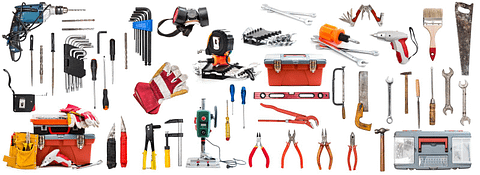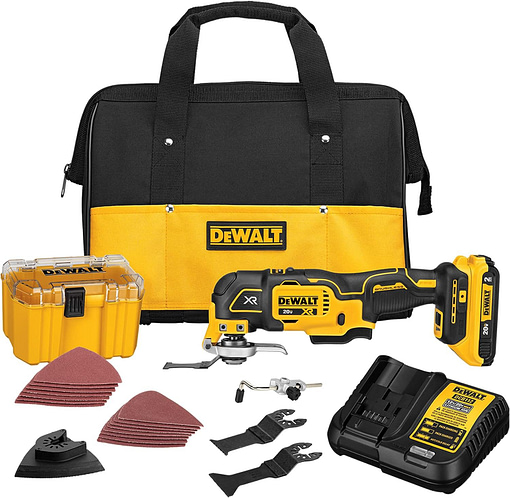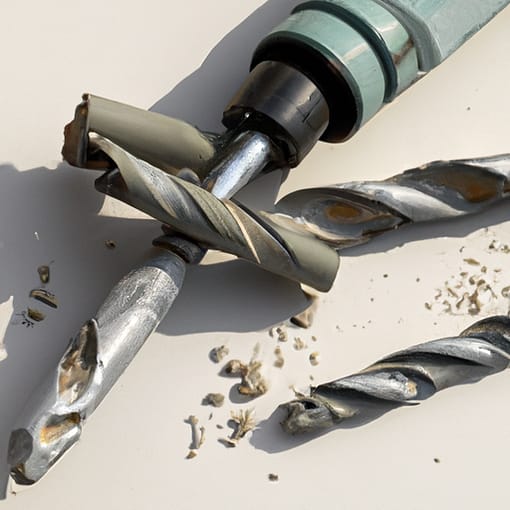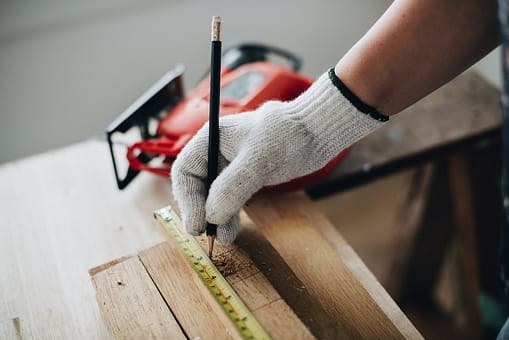Looking to embark on some DIY projects but unsure where to start? Look no further! This article presents a handy guide with tips on how to find the perfect DIY projects that match your interests and skill level. Whether you’re a seasoned DIY enthusiast or a beginner looking to explore new hobbies, these tips will help you discover the projects that are just right for you. So, let’s get started and unlock your creative potential!
1. Consider your interests and skills
Identify your interests and hobbies
When searching for the right DIY projects for yourself, it is important to start by considering your interests and hobbies. Think about what activities you enjoy doing in your spare time and what topics or themes you are passionate about. For example, if you love gardening, you might want to consider DIY projects related to landscaping or creating your own vegetable garden. If you enjoy crafts, you could explore DIY projects involving knitting, painting, or jewelry making. By identifying your interests, you can choose projects that align with your passions and ensure that you will enjoy the process.
Assess your skills and abilities
Another crucial aspect to consider when selecting DIY projects is your skills and abilities. Be honest with yourself about what you are capable of and what skills you possess. If you are a beginner, it might be best to start with simpler projects that don’t require advanced technical knowledge or expertise. On the other hand, if you have more experience or specific skills, you can challenge yourself with more complex projects. By assessing your skills and abilities, you can choose DIY projects that are appropriate for your level of expertise and enhance your abilities as you progress.
Consider your available time and resources
Time and resources are also important factors to take into account when finding the right DIY projects for you. Consider how much time you can dedicate to your DIY endeavors and choose projects accordingly. If you have limited time available, opt for smaller projects that can be completed in a few hours or over a weekend. Additionally, evaluate the resources you have access to, such as tools, materials, and workspace. Choose projects that fit within your available resources to ensure a smooth and enjoyable DIY experience.
2. Set realistic goals
Define your desired outcome
Before diving into any DIY project, it is essential to define your desired outcome. Ask yourself what you hope to achieve or create through the project. Having a clear vision of the end result will help you stay motivated and focused throughout the process. Whether it’s a beautifully organized closet, a handcrafted piece of furniture, or a freshly painted room, setting a goal will give you a sense of direction and purpose.
Break down the project into manageable tasks
Once you have defined your desired outcome, it is crucial to break down the project into manageable tasks. Start by listing all the steps involved in completing the project and organizing them in a logical order. Breaking down the project into smaller tasks will make it less overwhelming and more achievable. It will also allow you to track your progress and stay on schedule, ensuring that you complete each task efficiently and effectively.
Consider your budget and timeline
When choosing the right DIY projects for yourself, it is important to consider your budget and timeline. Assess how much you are willing to spend on materials, tools, and any professional assistance that may be required. Research the costs associated with your chosen project to ensure it aligns with your budget. Additionally, consider your timeline and any deadlines or time constraints you may have. Some projects may require more time, while others can be completed relatively quickly. Taking both budget and timeline into account will help you set realistic goals and avoid unnecessary stress.

3. Research and gather ideas
Browse DIY websites and magazines
To find inspiration for your DIY projects, spend some time browsing through DIY websites and magazines. These platforms are a treasure trove of ideas and tutorials, providing step-by-step instructions and helpful tips. Many websites also offer galleries or forums where you can see photos of completed projects and ask questions. By exploring these resources, you can get a sense of the wide range of DIY projects available and find ones that resonate with your interests and skills.
Visit home improvement stores or exhibitions
Another great way to gather ideas for DIY projects is by visiting home improvement stores or exhibitions. These places often showcase various products, materials, and project ideas. By physically seeing the materials and finished projects, you can get a better sense of what is possible and what catches your eye. Additionally, you can speak with knowledgeable staff who can provide guidance and recommendations based on your interests and skill level. Visiting these stores or exhibitions can be a valuable source of inspiration and help you visualize your own projects.
Join online DIY communities and forums
One of the best ways to connect with fellow DIY enthusiasts and glean ideas for projects is by joining online DIY communities and forums. These platforms provide a space for individuals to share their experiences, projects, and tips. By becoming an active member of these communities, you can learn from others, ask questions, and even showcase your own projects. Online DIY communities are an incredible resource for finding inspiration, getting feedback, and building a supportive network of like-minded individuals.
4. Start small
Choose simple and beginner-friendly projects
When embarking on your DIY journey, it is wise to start with smaller, simpler projects that are beginner-friendly. These projects will help you build confidence and develop your skills gradually. For example, you could begin with painting a room or assembling a basic piece of furniture. These projects require minimal tools and materials and provide a great learning experience without overwhelming you. Starting small allows you to gain a sense of accomplishment as you complete projects and motivates you to take on more challenging endeavors in the future.
Build confidence by completing smaller tasks
Completing smaller tasks within a DIY project is an effective way to build confidence. Break down your chosen project into smaller components or steps, and focus on accomplishing one task at a time. By successfully completing these smaller tasks, you will gain confidence in your abilities and feel more prepared to take on larger or more complex projects. Celebrating each small victory will help you stay motivated and enthusiastic about your DIY journey.
Gradually work your way up to more complex projects
As you gain experience and confidence, it is important to gradually challenge yourself with more complex DIY projects. Once you have successfully completed a few smaller tasks or projects, consider taking on a more ambitious project that pushes your skills and abilities further. This could involve building a piece of furniture from scratch, tackling a home renovation project, or even constructing a backyard shed. Gradually working your way up to more complex projects will allow you to continue growing as a DIY enthusiast and expand your capabilities.

5. Consider your available space and tools
Assess the space you have for working on projects
Before diving into any DIY project, it is crucial to assess the space you have available for working on your projects. Whether you have a dedicated workshop, garage, or just a corner in your apartment, understanding the limitations of your workspace will help you choose projects that fit within those parameters. If you have limited space, consider projects that can be done outdoors or ones that don’t require extensive equipment or materials. On the other hand, if you have a larger workspace, you may have the freedom to take on more ambitious projects.
Make a list of essential tools and equipment
To ensure a smooth and efficient DIY experience, make a list of the essential tools and equipment you will need for your chosen projects. Start with the basics, such as a hammer, screwdriver set, measuring tape, and level. As you progress and take on more complex projects, you may need to invest in additional tools specific to certain tasks. It is important to have the necessary tools on hand before starting a project to avoid delays or frustration. Consider purchasing quality tools that will last, but also be mindful of your budget.
Consider borrowing or renting tools for larger projects
For larger projects that require specialized or expensive tools, consider borrowing or renting them instead of purchasing them outright. This can be a cost-effective solution, especially if you only need the tool for a specific project. Check with friends, family, or neighbors who may have the tools you need and are willing to lend them to you. Alternatively, many home improvement stores offer tool rental services, allowing you to have access to a wide range of tools without breaking the bank.
6. Prioritize safety
Read and understand instructions and safety guidelines
Safety should always be a top priority when engaging in DIY projects. Before starting any project, thoroughly read and understand the instructions and safety guidelines provided by the manufacturer or resource you are using. Pay attention to any safety precautions or warnings, and ensure you have a clear understanding of the steps involved. Ignoring safety guidelines can lead to accidents or injuries, so take the time to familiarize yourself with proper procedures.
Use appropriate safety gear and equipment
To protect yourself during DIY projects, always use appropriate safety gear and equipment. This includes items such as safety glasses, gloves, masks, and protective clothing, depending on the nature of the project. Even for seemingly simple tasks, like painting or gardening, wearing the necessary safety gear can prevent accidents and protect your health. Invest in quality safety equipment and make it a habit to wear it whenever necessary.
Take necessary precautions to avoid accidents
In addition to using safety gear, it is important to take necessary precautions to avoid accidents. This includes ensuring a clean and organized workspace to reduce the risk of tripping or falling. Use proper ladder safety techniques when working at heights, and secure materials or tools to prevent them from falling or causing injuries. Take your time and avoid rushing through tasks, as this can lead to mistakes or accidents. By being mindful of potential hazards and taking precautions, you can minimize the risk of accidents or injuries during your DIY projects.
7. Take advantage of online tutorials and resources
Watch video tutorials on platforms like YouTube
Online platforms such as YouTube offer a wealth of video tutorials that can guide you through various DIY projects. Search for specific projects or techniques you are interested in and follow along with the instructions provided. Video tutorials provide a visual demonstration of each step, making it easier to understand and replicate the process. Take advantage of the vast library of DIY tutorials available online to learn new skills, discover innovative techniques, and gain confidence in your abilities.
Find step-by-step guides and instructional articles
In addition to video tutorials, you can also find step-by-step guides and instructional articles online. Many websites and blogs provide detailed written instructions accompanied by photos or diagrams. These guides can be a helpful resource for DIY projects, especially if you prefer reading and following written instructions. Look for reputable sources that provide clear and concise instructions, and bookmark them for future reference. Having access to these resources will enable you to tackle a wide range of projects with confidence.
Follow reputable DIY bloggers and social media accounts
To stay up to date with the latest trends, techniques, and project ideas, consider following reputable DIY bloggers and social media accounts. Many DIY enthusiasts share their projects, tips, and insights on platforms like Instagram, Pinterest, and personal blogs. Browsing through these accounts can inspire you, spark creativity, and introduce you to new project possibilities. Engage with the DIY community by commenting on posts, asking questions, and connecting with like-minded individuals who share your passion for all things DIY.
8. Consider your budget
Determine your budget for materials and tools
Before starting any DIY project, it is important to determine your budget for materials and tools. Different projects have varying costs depending on the materials needed and the complexity of the task. Research the average costs of the materials required for your chosen project and factor them into your budget. Additionally, consider any tools or equipment you may need to purchase or rent. By setting a budget, you can ensure that your DIY projects are financially sustainable and avoid overspending.
Look for cost-effective alternatives
To stay within your budget, look for cost-effective alternatives when sourcing materials or tools. Consider shopping around for the best deals and comparing prices from different suppliers. You may also find budget-friendly options by repurposing or upcycling materials. For example, instead of purchasing brand new furniture, you could refurbish or paint old pieces to give them a new lease on life. Being creative and resourceful can save you money while still allowing you to create beautiful and functional DIY projects.
Consider repurposing or upcycling materials
Repurposing or upcycling materials is not only a cost-effective option, but it also promotes sustainability and reduces waste. Look for opportunities to reuse materials or give them a new purpose in your DIY projects. For example, instead of buying new planters, consider using old mason jars or tin cans. This approach can add a unique touch to your projects and give them a personalized and eco-friendly twist. Repurposing or upcycling materials allows you to get creative and experiment with different materials without putting a strain on your budget.
9. Evaluate the level of commitment required
Assess the time and effort needed for the project
Before committing to a DIY project, it is essential to assess the time and effort required for its completion. Some projects may be quick and straightforward, while others may take several weeks or even months to finish. Consider whether you have the time and dedication to see the project through to the end. Be realistic about the level of commitment you can devote to the project and ensure that it aligns with your other responsibilities and obligations. Starting a project and not being able to finish it can lead to frustration and wasted resources, so choose projects that fit your schedule.
Consider whether you can commit to the project
Aside from the time and effort required, it is important to evaluate whether you can commit to the project on a deeper level. DIY projects can sometimes be challenging or overwhelming, and it is crucial to assess whether you have the motivation and perseverance to overcome obstacles. Consider your level of interest in the project, your willingness to problem-solve and learn new skills, and your overall level of commitment. Choosing projects that align with your passion and determination will make the entire DIY experience more enjoyable and rewarding.
Avoid overwhelming yourself with overly complex projects
As tempting as it may be to take on ambitious and complex DIY projects, it is important to avoid overwhelming yourself. While it’s great to challenge yourself and learn new skills, biting off more than you can chew can lead to frustration and disappointment. Start with projects that are within your skill level and gradually work your way up to more complex ones. This will allow you to build confidence and expertise, avoiding the feeling of being overwhelmed. Remember, the goal is to enjoy the process and create something you can be proud of, so choose projects that are both challenging and manageable.
10. Seek inspiration from your surroundings
Look for inspiration in your home or neighborhood
Sometimes, the best inspiration for DIY projects can be found right in your own home or neighborhood. Look around your living space and identify areas or items that could benefit from some DIY love. Whether it’s a neglected corner, a piece of furniture in need of a makeover, or a blank wall begging for a creative touch, your surroundings can provide countless ideas for projects. Additionally, take walks or explore your neighborhood to find inspiration in architecture, landscaping, or even the colors and textures of nature.
Consider DIY projects that solve specific problems
Another way to find the right DIY projects for yourself is by considering projects that solve specific problems or address needs in your daily life. Think about any challenges or inconveniences you face and brainstorm potential DIY solutions. Perhaps you need extra storage in your kitchen or a better way to organize your home office. By focusing on projects that have a practical purpose, you can enhance your living space and improve functionality while indulging in your DIY passion.
Take inspiration from nature or other sources
Nature and other sources of inspiration can offer a wealth of ideas for your DIY projects. Pay attention to the colors, patterns, and textures found in nature, and consider incorporating them into your projects. Whether it’s a floral arrangement, a painting inspired by a sunset, or a woven rug resembling a natural landscape, taking inspiration from the world around you can result in unique and visually stunning creations. Other sources of inspiration could include art, music, literature, or even cultural traditions. Let your imagination roam free and allow diverse influences to shape your DIY projects.
In conclusion, finding the right DIY projects for yourself involves considering your interests, skills, available time, and resources. Set realistic goals by defining your desired outcome, breaking down projects into manageable tasks, and considering your budget and timeline. Research and gather ideas from DIY websites, magazines, home improvement stores, and online communities. Start with small projects to build confidence, consider your available space and tools, and prioritize safety. Take advantage of online tutorials and resources, make a budget, evaluate the level of commitment required, and seek inspiration from your surroundings. By following these tips, you will be well on your way to finding and enjoying the perfect DIY projects for you. Happy crafting!













